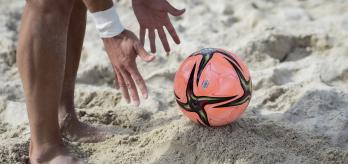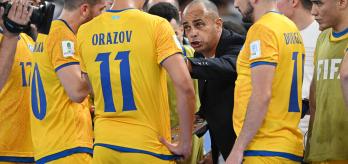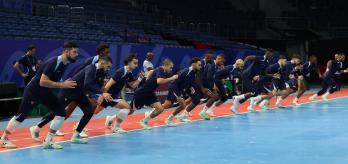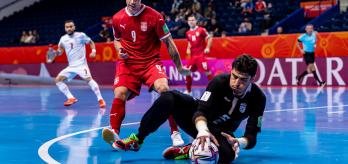Chapter 1: Introduction
This resource is designed to be useful for both the expert and the novice. Chapter 1 outlines the manual’s purpose to provide the tools – rather than the solutions – for coaching in futsal.
Chapter 2: The history of futsal
To have a thorough grasp of the sport, it’s beneficial to learn about its origins. This chapter explores futsal’s journey since its emancipation in 1930 and its links with football.
Chapter 3: FIFA Futsal Laws of the Game
Futsal is regulated by the FIFA Futsal Laws of the Game. Futsal should be played globally according to this standardised set of Laws so that a consistent approach to play is achieved. Chapter 3 focuses on these laws, their application and their amendments.
Chapter 4: Motivation to play and develop futsal
Futsal is both a game in its own right and can be considered a player-development tool for football. Both approaches have a part to play in developing this format of the game, and there is variance in the approach taken by FIFA’s member associations around the world.
Chapter 5: A modern approach to coaching futsal
No matter how many resources, courses or books an aspiring coach has experience in, the art of coaching is learned and developed through its practical application. This chapter lays out a modern take of coaching the sport.
Chapter 6: The developing player
It is vital for the coach to recognise and understand that all players develop at different rates through the phases, and each player’s developmental needs are unique. Read chapter 6 to discover more on this topic.
Chapter 7: The youth player
As players mature through early childhood into adolescence, they change in many ways. In chapter 7, the various impacts these changes have on coaching are brought under the microscope.
Chapter 8: Coaching adults
Although many adults participate in the game for purely recreational reasons, some strive to reach the sport's pinnacle. This chapter looks at the considerations coaches should factor in when coaching these two types of players.
Chapter 9: The coaching session
Coaching sessions do not simply happen; they need to be considered, understood, prepared and, ultimately, delivered. This section of the coaching manual considers the what, why and how of conducting sessions.
Chapter 10: Technical development
Technique is a necessity for players of all levels to enjoy and thrive in futsal. The tenth chapter of the manual lays out the core pillars of technical development, offering readers an insight into how to bring out the best in their players.
Chapter 11: Futsal tactics
When considering tactical formations, this does not infer rigid organisations or lines, but the organised positioning on the pitch in order to fulfil certain objectives, roles and function. Chapter 11 looks at this in more detail and provides exercises for different systems.
Chapter 12: Set pieces
Chapter 12 focuses on set pieces. Set pieces are a unique way to set up a structured movement of players and ball delivery that should yield positive results.
Chapter 13: The goalkeeper
The goalkeeper plays a unique role in a team. They have the crucial task of defending their team’s goal, but recently, they have become increasingly involved in attacking play. Chapter 13 covers goalkeeper development, qualities, training exercises and training plans.
Chapter 14: Physical preparation
Futsal is a unique game. Its Laws of the Game, the pitch size, minimal-bounce ball which stays in play longer, player numbers and constant rotation of players all contribute towards its uniqueness. Chapter 14 reveals how physical conditioning needs to consider these factors.
Chapter 15: Match preparation and conduct
This coaching manual promotes the prioritisation of using as much gameplay as possible during the early player development phases. That said, not every training session should be regarded as a match, but game-based training to provide realistic contexts in exercises.
Chapter 16: Planning a season
Struggling to get started with a session plan? Chapter 16 provides a comprehensive framework coaches can use to ensure their sessions have a positive and lasting impact on the players.
Chapter 17: Futsal glossary
This glossary contains several of the key terms used within the sport. Because of it’s global nature, vocabulary used to communicate about futsal can vary. The glossary standardises some of the main concepts for a global audience.











.variant64x64.png)

.variant348x164.png)






